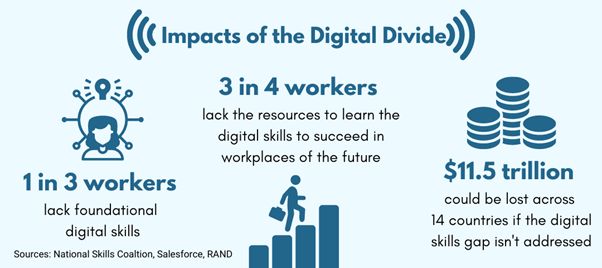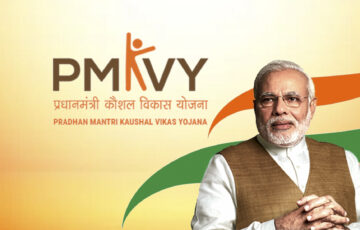Digital India Scheme- 2.0
Relevance
- GS Paper 2 Welfare schemes for vulnerable sections of the population by the Centre and States and the performance of these schemes.
- Tags: #DigitalIndia #Scheme #ecommerce
The initiative taken under Digital India Scheme
The Digital India program, launched by the Indian government, encompasses a wide range of initiatives aimed at transforming the nation into a digitally empowered society and knowledge economy. These initiatives have had a profound impact on various aspects of governance, digital inclusion, and technological advancement. Here, we will delve into each of these key initiatives under the Digital India program:
- Aadhaar: Aadhaar is a 12-digit biometric and demographic-based identity, providing a unique and secure means of identification for residents. Over 135.5 crore residents have been enrolled, giving them a lifelong, online, and authenticable identity.
- Common Services Centres (CSCs): CSCs are essential for delivering government and business services digitally, especially in rural areas through Village Level Entrepreneurs (VLEs). Over 5.21 lakh CSCs are operational, offering over 400 digital services, enhancing digital access in both urban and rural regions.
- DigiLocker: DigiLocker is a digital document storage platform, providing a secure ecosystem for issuers to upload documents in digital repositories. It boasts over 13.7 crore users and access to more than 562 crore documents from 2,311 issuer organizations.
- UMANG (Unified Mobile Application for New-age Governance): UMANG offers more than 1668 e-services and over 20,197 bill payment services on a mobile platform. It streamlines government services for citizens, making them accessible and convenient through a single application.
- e-Sign: The e-Sign service facilitates the instant online signing of forms and documents by citizens in a legally acceptable form. It leverages OTP-based authentication services of UIDAI, with more than 31.08 crore e-Signs issued by all agencies.
- MyGov: MyGov is a citizen engagement platform designed to foster participatory governance. Over 2.76+ crore users are registered, actively participating in various activities hosted on the platform.
- MeriPehchaan (NSSO platform): Launched in July 2022, MeriPehchaan is a National Single Sign-on (NSSO) platform facilitating access to government portals. It integrates 4,419 services from various Ministries and States.
- Digital Village Pilot Project: Initiated in October 2018, this project covers 700 Gram Panchayats and villages in all districts, offering services like Digital Health, Education, Financial Services, Skill Development, and more, promoting Government to Citizens (G2C) and Business to Citizen (B2C) services.
- eDistrict MMP: This Mission Mode Project (MMP) focuses on the electronic delivery of high-volume citizen-centric services at the district or sub-district level. Currently, 4,671 e-services are available in 709 districts across India.
- Open Government Data Platform: This platform encourages data sharing and innovation with over 5.93 lakh datasets available through 12,940+ catalogues, facilitating 94.8 lakh downloads.
- eHospital/ORS (Online Registration System): e-Hospital is a Hospital Management Information System, with 753 hospitals onboarded and 557 hospitals using ORS. It has enabled over 68 lakh appointments.
- CO-WIN: Developed as an open platform for registration, appointment scheduling, and managing vaccination certificates for COVID-19. It has registered 110 crore persons and administered 220 crore doses of vaccinations.
- Jeevan Pramaan: Jeevan Pramaan digitizes the process of securing life certificates for pensioners, eliminating the need for physical presence in front of the disbursing agency or certification authority. Over 685.42 lakh Digital Life certificates have been processed since 2014.
- NCOG-GIS Applications: The National Centre of Geo-informatics (NCoG) project is a GIS platform developed for sharing, collaboration, location-based analytics, and decision support systems. It currently hosts 659 operational applications across various domains.
- National Knowledge Network: This high-speed data communication network interconnects institutions of higher learning and research. To date, 1,752 links have been commissioned, and 522 NKN links have been connected to NIC district centers across India.
- PMGDISHA (Pradhan Mantri Gramin Digital Saksharta Abhiyaan): This initiative aims to promote digital literacy in rural India, covering 6.63 crore registered candidates, with 5.69 crore candidates trained and 4.22 crore certified.
- Unified Payment Interface (UPI): UPI is the leading digital payment platform in India, onboarding 376 banks and facilitating 730 crore transactions worth Rs 11.9 lakh crore.
- FutureSkills Prime: In collaboration with NASSCOM, this program focuses on reskilling and upskilling IT professionals in ten new/emerging technologies, including Artificial Intelligence, Internet of Things, and Cyber Security.
- Cyber Security: The government has taken measures to address data privacy and security challenges, ranking in the top 10 in the Global Cybersecurity Index in 2020.
- Electronics Manufacturing (M-SIPS, Electronic Manufacturing Clusters): M-SIPS has approved 315 applications with proposed investments of approximately Rs. 85,632 crore. Under the EMC scheme, 19 Greenfield EMCs and 3 Common Facility Centers have been approved in 15 states, covering 3,464 acres with a project cost of Rs. 3,732 crore.
Success
The success of the Digital India initiative can be measured in several ways, and it has made significant strides since its launch in 2015. Here are some key aspects that highlight the success of Digital India:
- Digital Infrastructure: The program has led to a substantial improvement in digital infrastructure, with increased internet connectivity, especially in rural areas. The BharatNet project, for example, aims to connect over 2.5 lakh gram panchayats with high-speed broadband, a critical step in bridging the digital divide.
- Aadhaar Integration: Aadhaar, a cornerstone of Digital India, has provided a unique digital identity to over 135.5 crore residents, making it easier for citizens to access government services and subsidies, improving efficiency and transparency.
- e-Governance: Digital India has streamlined government operations by digitizing processes, resulting in greater efficiency, transparency, and accessibility of services. Initiatives like e-District and e-Hospital have made services more citizen-centric.
- Financial Inclusion: The Pradhan Mantri Jan Dhan Yojana (PMJDY) has made significant progress in increasing financial inclusion, with millions of previously unbanked citizens now having access to banking facilities, insurance, and pension services.
- Digital Literacy: The program has promoted digital literacy, with training programs reaching various sections of the population, particularly in rural and remote areas.
- Digital Services: Numerous digital services have been made available to citizens through various government portals and mobile applications, enhancing convenience and accessibility.
- Government Efficiency: The digitization of government processes has improved the efficiency of government operations, reducing paperwork and bureaucracy.
- Innovation and Startups: The program has fostered innovation and entrepreneurship in the digital sector, resulting in the growth of startups and new technologies.
- COVID-19 Response: During the COVID-19 pandemic, Digital India played a crucial role in facilitating the registration, appointment scheduling, and administration of vaccinations through the CO-WIN platform, contributing to India’s vaccination drive.
Challenges
The Digital India initiative has made significant progress, but it also faces several challenges, including:
- Digital Divide: Despite increased internet penetration, a significant digital divide persists in India, with many rural and economically disadvantaged areas lacking access to high-speed internet and digital devices.
- Digital Illiteracy: A large section of the population, especially in rural areas, lacks digital literacy and the skills required to navigate and utilize digital platforms and services effectively.
- Privacy Concerns: The use of Aadhaar and digital services has raised concerns about data privacy and security, necessitating stringent regulations and safeguards.
- Cybersecurity: As digital adoption grows, so do the risks of cyberattacks and data breaches. Ensuring robust cybersecurity is an ongoing challenge.
- Infrastructure Development: Expanding digital infrastructure to reach remote and underserved areas remains a significant challenge. Building the required physical and digital infrastructure is resource-intensive.
- Bureaucracy and Red Tape: Despite digitization efforts, bureaucratic red tape and inefficiencies can still hinder the seamless delivery of government services.
- Economic Disparities: Digital initiatives should benefit all socio-economic strata. Economic disparities can impede access to digital services and hinder their benefits for marginalized communities.
- Interoperability: Achieving seamless integration and interoperability between various government databases and services remains a technical challenge.
- Digital Security Threats: The digital world is rife with threats, including cyberattacks, data breaches, and misinformation. Protecting digital systems and information is an ongoing concern.
- Regulatory Framework: Developing and maintaining a comprehensive regulatory framework that balances innovation with consumer protection and data privacy is a complex challenge.
- Economic Viability: Some digital services and projects may struggle to achieve financial sustainability, requiring continued government support.
- Resistance to Change: Cultural and institutional resistance to change can be a significant obstacle in the public sector’s full transition to digital processes.
Way Forward
- Digital Inclusion: Address inequities in access to technology, ensuring that all segments of the population have access to smart devices and internet services.
- Physical and Social Infrastructure: Improve physical and social infrastructure, including reliable power supply, to enhance the quality of internet access and bridge usage gaps.
- Government Initiatives: The government’s commitment to providing 4G network access to all uncovered villages by 2024 is a step in the right direction. Strengthen digital literacy initiatives to skill and upskill users.
- Security and Awareness: Address the rising concerns of cybercrimes and financial frauds by raising awareness and building technical security. Initiatives like Sanchar Saathi are steps in this direction.
- Focus on Impact: The metrics of digital success should not be limited to the number of users but should extend to the positive impact on people’s lives, including financial security and well-being.
- Adaptive Policy and Regulation: Develop agile regulatory frameworks that keep pace with evolving technologies and business models, considering emerging trends like regulatory sandboxing and co-regulation.
- Data and Evidence: Enhance data collection and transparency to enable meaningful analysis and impact assessment of the digital ecosystem. Regular monitoring and accountability will build trust and ensure sustainability.
These principles will guide the future of Digital India, ensuring that it continues to transform the country while addressing the challenges and inequities that come with digital acceleration.
Mains question
Examine the role of Digital India in bridging the rural-urban digital divide and its potential for empowering citizens and driving economic growth. Evaluate the challenges and policy recommendations.





